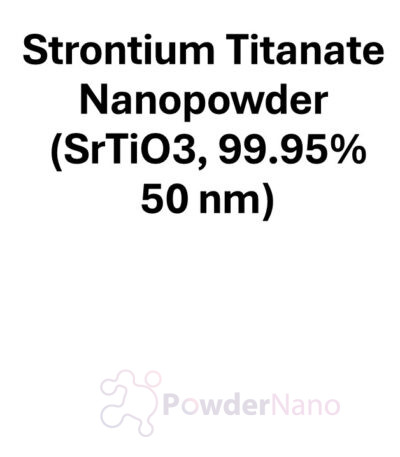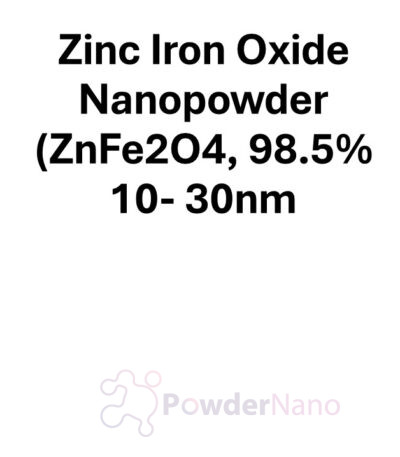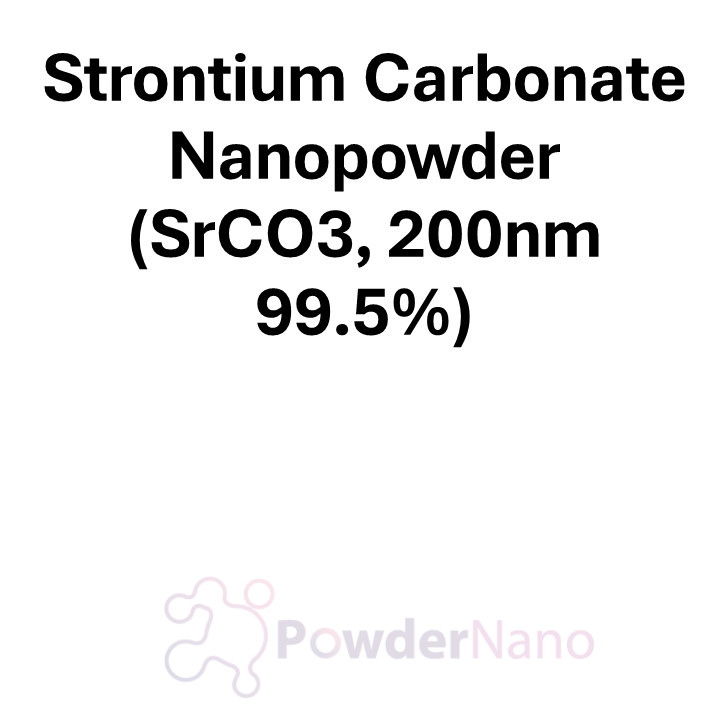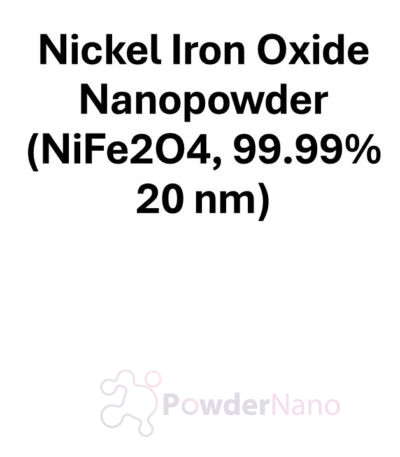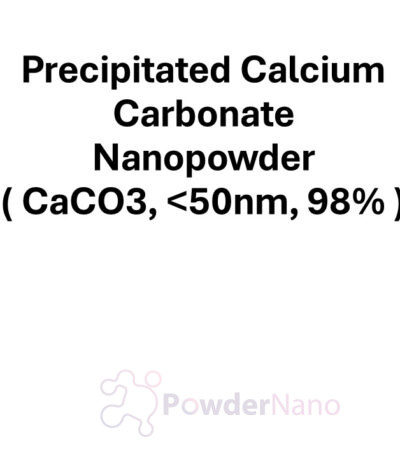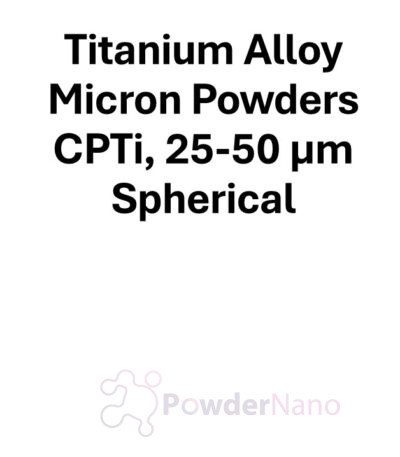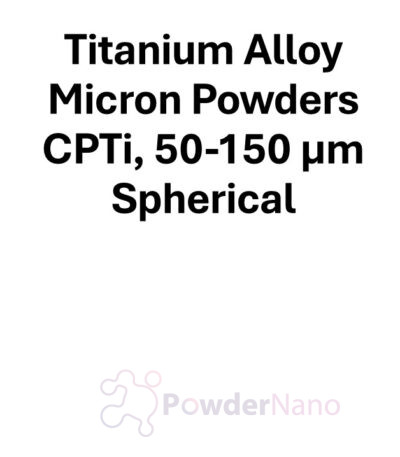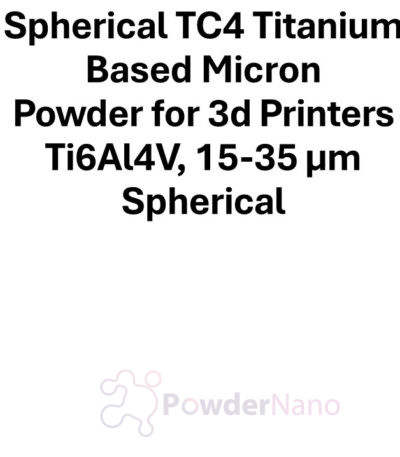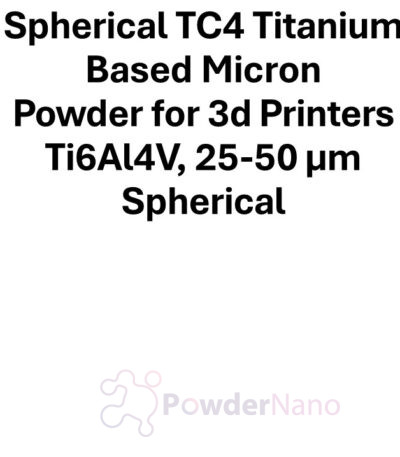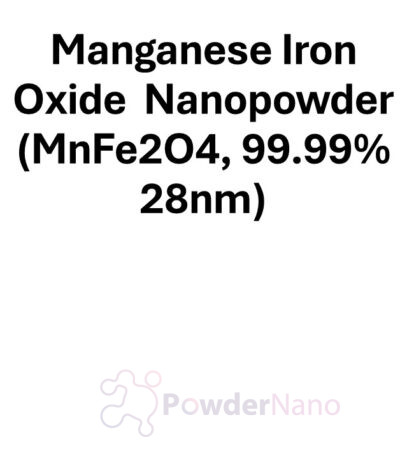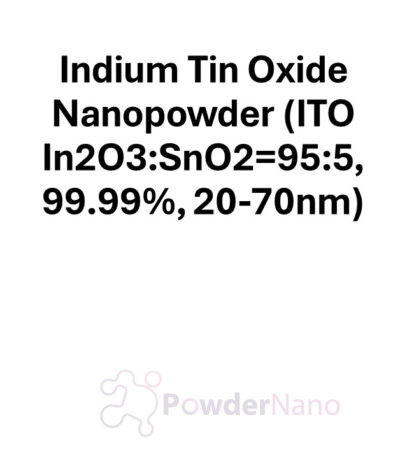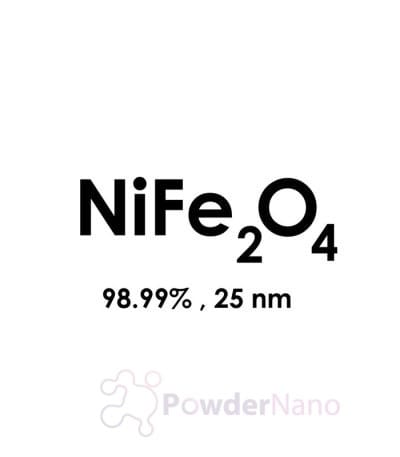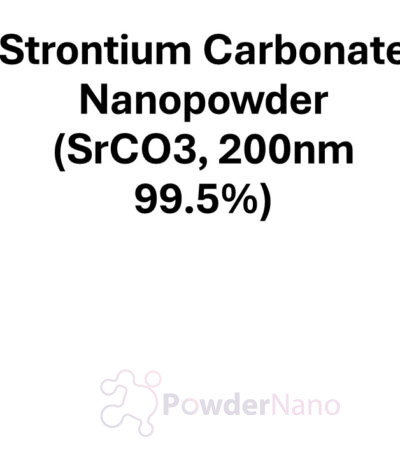Technical Specifications:
- Chemical Composition:
- Primary Ingredient: Strontium Carbonate (SrCO₃).
- Purity: 99.5% (high purity with minimal impurities).
- Particle Size:
- Particle Size: 200 nm (nanometers).
- Particle Shape: Typically spherical or irregular depending on the synthesis process.
- Crystal Structure:
- Orthorhombic structure contributing to its stability and material performance.
- Density:
- Lower apparent density compared to bulk SrCO₃ due to nanoparticle structure.
- Thermal Properties:
- Decomposes to Strontium Oxide (SrO) at high temperatures (~1100°C).
- Color: White or off-white.
Applications:
- Ceramics:
- Purpose: SrCO₃ is widely used as a precursor material for ceramic production.
- Application: Incorporated into glass and ceramics to improve hardness, durability, and thermal resistance. Common in the production of CRT glass, ceramic capacitors, and glazes.
- Electronics:
- Purpose: Acts as a dielectric material in electronic components.
- Application: Used in the production of multilayer ceramic capacitors (MLCCs) and piezoelectric devices.
- Pyrotechnics:
- Purpose: Strontium carbonate imparts a bright red color to flames.
- Application: Utilized in fireworks, flares, and other pyrotechnic compositions.
- Glass Manufacturing:
- Purpose: Enhances the optical and thermal properties of specialty glass.
- Application: Used in producing television picture tubes, cathode ray tubes, and other display glass components.
- Pharmaceuticals:
- Purpose: Biocompatible properties make SrCO₃ suitable for certain medical applications.
- Application: Used in bone regeneration materials and as a raw material for synthesizing other strontium-based compounds in medical treatments.
- Chemical Catalysis:
- Purpose: Acts as a precursor or catalyst in chemical processes.
- Application: Utilized in synthesizing advanced materials, coatings, and pigments.
- Environmental Applications:
- Purpose: Strontium carbonate can help capture and neutralize acidic gases.
- Application: Used in flue gas desulfurization to remove sulfur dioxide (SO₂) from emissions.
- Strontium Compounds Precursor:
- Purpose: SrCO₃ serves as a starting material for producing various strontium compounds.
- Application: Used in synthesizing strontium ferrite, strontium titanate, and other advanced materials for electronics and magnetics.
- Pigments and Coatings:
- Purpose: Provides color stability and durability in paints and coatings.
- Application: Utilized as a stabilizer in specialty pigments and high-performance coatings.
Key Benefits:
- High Purity: The 99.5% purity ensures optimal performance in sensitive applications like electronics and pharmaceuticals.
- Nanoscale Properties: The 200 nm particle size enhances surface reactivity and dispersion in composite materials.
- Thermal Stability: Suitable for high-temperature applications, such as ceramic and glass manufacturing.
- Versatile Applications: Widely used in ceramics, pyrotechnics, glass, electronics, and environmental industries.
- Cost-Effectiveness: A highly efficient material for applications requiring strontium-based compounds.
Strontium Carbonate Nanopowder (SrCO₃) is a versatile material essential for ceramics, electronics, glass manufacturing, pyrotechnics, and environmental applications, offering excellent performance due to its high purity and nanoscale properties.
